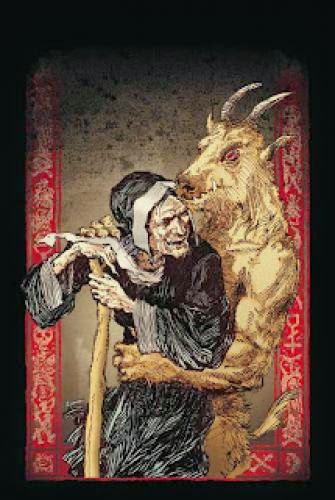
First, the press release became almost immediately suspect, not only because of the provocative title, but also because of one of the sources quoted in the item. Steve Wohl, a Christian and author of the book "Hour of the Witch" is quoted as saying, "we are now in a turning point and that Wicca would emerge as the third largest faith in America and would directly challenge Christian ideals of church and state." After a review of Mr. Wohl's website it appears that he provides yet another example of problematic, inaccurate, and sensationalistic Christian treatments of Wicca. The quotes he provides in the press release can easily be challenged as factually inaccurate, and the quotations seem more intent on alarming Christians than in accurately assessing Wicca and its relationship to the important issues of religious pluralism, tolerance, and freedom.
Second, the sensationalistic treatment of Wicca and other expressions of Paganism is an ongoing problem for Christians who have an unfortunate history of this practice, sometimes with very damaging results. The sensationalistic reporting of Wicca is akin to historic caricatures such as that illustrated in the image that which accompanies this post which depicts a common Christian stereotype of Witches as consorts of Satan.
Third, there is an unfortunate tendency to inflate the growth of Paganism and Wicca (as well as Witchcraft) by representatives on both sides of the metaphysical divide, whether Christian or Pagan. While reliable statistics are difficult to come by due to several factors, and a variety of estimates have been suggested, the American Religious Identification Survey of 2001 listed the number of Wiccans in the United States at 134,000, and when coupled with other forms of Paganism they arrived at a total Pagan adult population of 614,000. With the inclusion of children the number goes to 800,000. If we compare this figure with other religions in the United States, such as the 1.1 million Buddhists, 1.1 million Muslims, 2.8 million Jews, and some 159 million adherents of Christianity, then the numbers of Pagans in the United States is relatively small.
This is not to minimize or downplay either the growth of Paganism or its significance in the American religious marketplace. Great size is not necessary for a religion or spirituality to have significant impact in the marketplace of ideas, as demonstrated by various expressions of neo-Buddhism, Do-It-Yourself Spirituality, and Paganism. The influence of these religions and spiritualities is increasingly felt in the contemporary spiritual quest as well as in popular culture, even though the numbers of adherents or practitioners is relatively small. Thus, the new religions and alternative spirtualities represent a significant facet of American religious and spiritual life for the twenty-first century.
I hope that those interested in Pagan studies, particularly the media and evangelicalism, can be encouraged to seek out reliable sources of information on Paganism and can reflect on it carefully and critically. The increasing religious diversity of the public square, not to mention fairness in understanding and representation, makes these considerations more important than ever.







